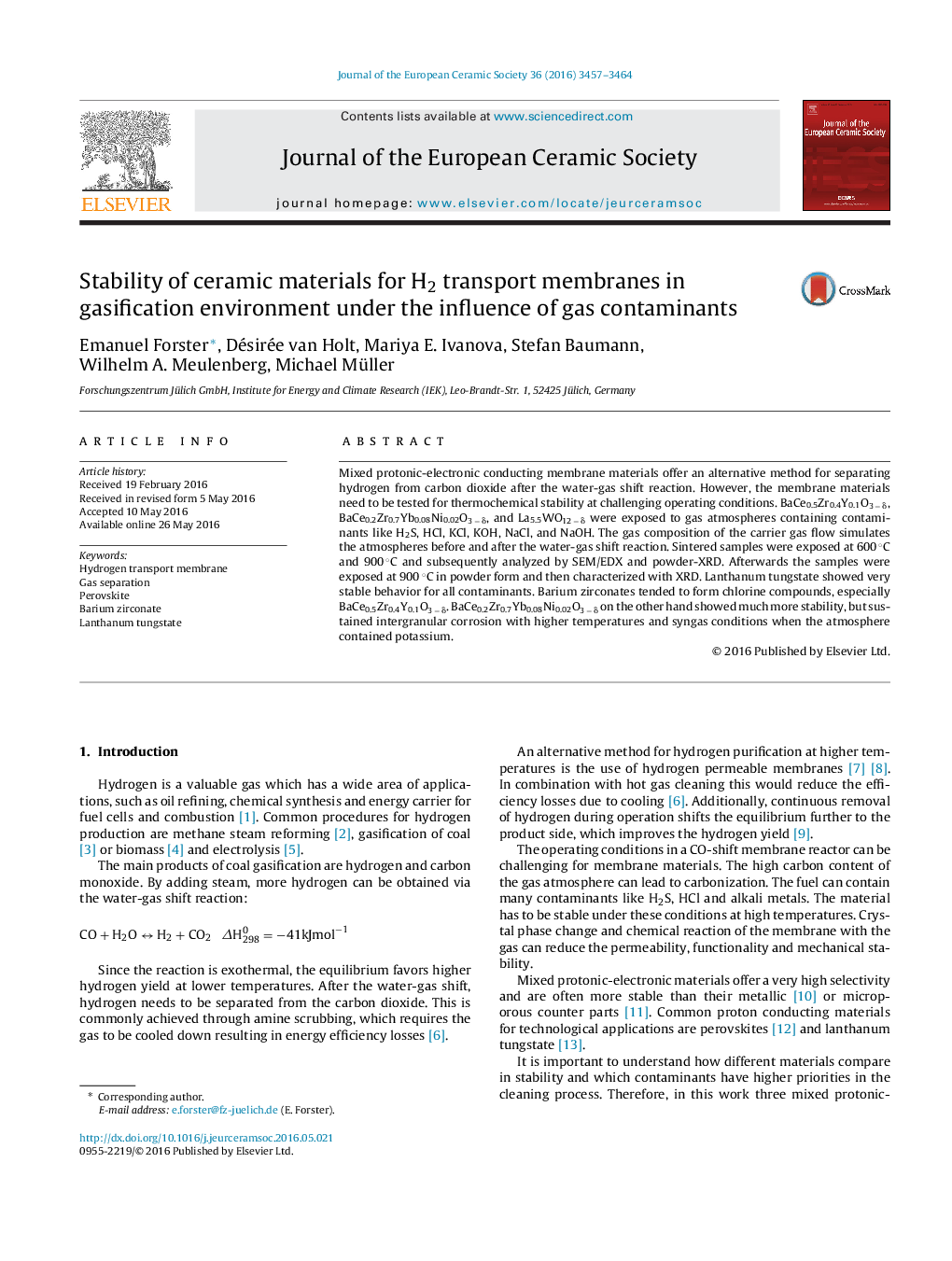| Article ID | Journal | Published Year | Pages | File Type |
|---|---|---|---|---|
| 10629228 | Journal of the European Ceramic Society | 2016 | 8 Pages |
Abstract
Mixed protonic-electronic conducting membrane materials offer an alternative method for separating hydrogen from carbon dioxide after the water-gas shift reaction. However, the membrane materials need to be tested for thermochemical stability at challenging operating conditions. BaCe0.5Zr0.4Y0.1O3 â δ, BaCe0.2Zr0.7Yb0.08Ni0.02O3 â δ, and La5.5WO12 â δ were exposed to gas atmospheres containing contaminants like H2S, HCl, KCl, KOH, NaCl, and NaOH. The gas composition of the carrier gas flow simulates the atmospheres before and after the water-gas shift reaction. Sintered samples were exposed at 600 °C and 900 °C and subsequently analyzed by SEM/EDX and powder-XRD. Afterwards the samples were exposed at 900 °C in powder form and then characterized with XRD. Lanthanum tungstate showed very stable behavior for all contaminants. Barium zirconates tended to form chlorine compounds, especially BaCe0.5Zr0.4Y0.1O3 â δ. BaCe0.2Zr0.7Yb0.08Ni0.02O3 â δ on the other hand showed much more stability, but sustained intergranular corrosion with higher temperatures and syngas conditions when the atmosphere contained potassium.
Related Topics
Physical Sciences and Engineering
Materials Science
Ceramics and Composites
Authors
Emanuel Forster, Désirée van Holt, Mariya E. Ivanova, Stefan Baumann, Wilhelm A. Meulenberg, Michael Müller,
